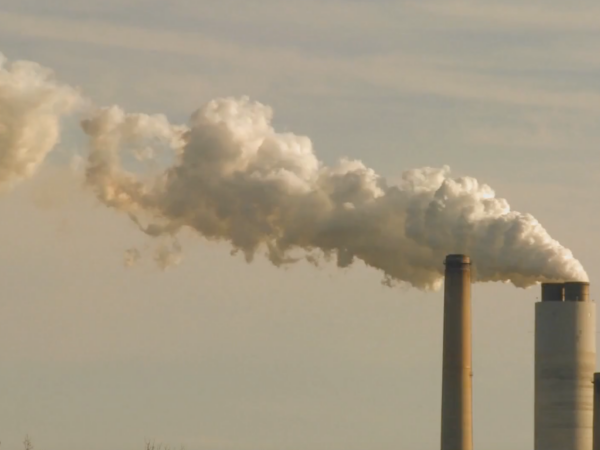
PFAS, short for per- and polyfluoroalkyl substances, are a group of widespread man-made chemicals that don’t break down in the environment or the human body and have been flagged as a major contaminant in sources of water across the country.
Keep up with PFAS-related developments in the Great Lakes area.
Click on the headline to read the full story:
Indiana
- Nine small Indiana drinking water utilities have levels of PFAS above federal health guidelines — Indiana Public Media
The state detected harmful PFAS in the treated drinking water at more than two dozen small water utilities in Indiana. This is the second round of testing the Indiana Department of Environmental Management has done for PFAS in public water utilities.
Small amounts of PFAS have been found in the groundwater and surface water near a former landfill in Sparta Township. The Sparta Foundry Waste Facility operated from the early 1980s through 2021. Because the landfill is not lined, the Michigan PFAS Action Response Team said the Department of Environment, Great Lakes and Energy requested a site analysis before the landfill was closed.
- State regulators to start using new test for PFAS — Michigan Radio
The Michigan Department of Environment, Great Lakes and Energy will begin using U.S. EPA testing Method 533. The method tests for twenty-five kinds of chemicals called PFAS, including the seven PFAS currently regulated by the State of Michigan.
- North America’s first ‘PFAS Annihilator’ is already operating in Michigan — WJHL
- North America’s first ‘PFAS Annihilator’ is already operating in Michigan — KGET.com
After five years of development, the nation’s first high-volume closed-loop PFAS destruction system is up and running in Michigan.
Minnesota
- Cities With Water Utilities May Participate in PFAS Litigation — League of Minnesota Cities
Even cities with no PFAS detected, but with later contamination issues, may have access to funds because the exact terms of any settlement are still being figured out.
Ontario
Canadian researchers have developed a way to take out 99% of these potentially dangerous chemicals from our drinking water. The PFAS are later destroyed using special electrochemical and photochemical techniques.
Wisconsin
- Another source of toxic PFAS in Wisconsin: Toilet paper? — Wisconsin Public Radio
When you flush your toilet, sending waste to a nearby sewage treatment system, you might also be contributing toxic chemicals to the local watershed. University of Florida scientists recently studied 21 toilet paper brands from around the world and found traces of PFAS in each case. The study does not name the brands.
The Wisconsin Department of Natural Resources and the Department of Health Services announced a new PFAS-based consumption advisory for Green Bay and its tributaries.
State wildlife and health officials are urging anglers against eating more than one meal per week of rainbow smelt from Green Bay’s waters. That includes the bay’s tributaries up to the first dam, meaning it impacts portions of the Peshtigo, Oconto and Menominee Rivers. The warning comes after elevated levels of PFAS were found in rainbow smelt sampled from the bay.
Even with all the attention PFAS pollution has been getting, Wisconsin’s Natural Resources Secretary believes some do not yet appreciate how serious the concern is.
- How to Reduce Your Exposure to PFAS, Part One: Limit How Much Fish You Eat From … — Public Health Madison & Dane County
The Wisconsin Department of Natural Resources tested fish from the Yahara River chain of lakes in 2020. They found PFAS levels above the recommended health standards in several fish species for all lakes except Mendota. In general, panfish (white bass, bluegill, and crappie) tend to have the highest levels of PFAS. There is no known way to prepare or cook fish that will reduce exposure to PFAS.
National
- Water PFAS clean-up costs could trickle down — NBC News
People in states that have enacted PFAS regulations are already paying more for clean drinking water. Should the EPA’s proposed regulations pass, the rest of the country could be paying more, too.
- Are you putting PFAS on your eyeballs? — Environmental Health News
New study finds evidence of PFAS in all 18 brands of contact lenses tested.
- PFAS chemicals in drinking water cause of obesity: study — New York Post
Elevated levels of PFAS can make it more challenging to keep pounds off — especially after a recent weight loss, according to a new study.
- Study: Ingredient found in salad bowls and burger wrappers less safe than previously thought — STAT News
A compostable salad bowl seems like an Earth-friendly way to enjoy a healthy lunch. But the toxic chemicals used in containers like molded-fiber salad bowls, sandwich wrappers, and French fry pouches may be leaching into food despite efforts to make those materials safer, according to the results of a study published in March in the journal Environmental Science and Technology.
PFAS are linked to problems with fetal development, thyroid disease, and issues with livers and kidneys.
Catch more news at Great Lakes Now:
PFAS News Roundup: West Michigan is showing PFAS levels higher than the national average
PFAS News Roundup: Questions about the EPA’s nationwide PFAS rule, answered




